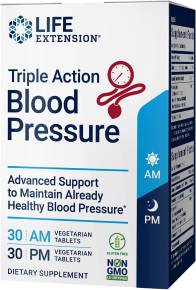Consumers are more aware of probiotics than ever before. As research continues to demonstrate, “Probiotics are more important than multivitamins and should be taken daily”© And yet, it is more confusing than ever to know what probiotic to choose.
Guidelines When Choosing a Probiotic
There are several things to consider when choosing a probiotic:
Probiotic Functionality
For probiotics to be effective they must provide the appropriate health benefits – this is specific to the condition, the dose and the strain of probiotic. For those looking for health maintenance – gut health and immune system boost, a good, broad spectrum probiotic is optimum. For specific conditions, the dose may have to be increased to double or even triple levels (be sure to consult with your physician).
Probiotic Safety
it is helpful to look for probiotics with a long history of use. Some probiotics have been given GRAS (Generally Recognized as Safe) status, look for GRAS when selecting probiotics. Probiotics can come from human, animal, soil or food origin, human strains are most compatible with the human gut. Spore-forming, soil organisms should be thoroughly studied, reviewed by FDA and given GRAS status before use.
Probiotic Reliability
Probiotics should meet or exceed their label guarantees of live cell count (CFU/g) at time of purchase and expiration date. Probiotics are live microorganisms that live in little or no oxygen in the gut; they are sensitive to oxygen, moisture and heat. Production and packaging of probiotics should involve limiting exposure to oxygen by packaging in barrier packages and elimination of oxygen by flushing with nitrogen. The support compounds should be low in available moisture and products should be protected from dramatic fluctuations in temperature (this is why many are recommended to be refrigerated).
Individual Probiotic Needs
Dairy-free, gluten-free, soy-free, corn-free, non-GMO, veggie capsules are all qualities important to some people, read the label to find out if your probiotics meet these needs.
Differences Between Probiotic Strains
Acid and Bile Resistance
Many probiotics are not able to survive the acid in the stomach and bile in the small intestine to reach the desired location in the gut (in some cases, fewer than 25% can make it through) – look for acid and bile resistant probiotics.
Colonizers vs. Transients
Many probiotics are not able to colonize in the gut, they provide health benefits only on their way through the gut. Colonizers multiply and continue to provide benefits when they reach their destination. This is one of the reasons that some probiotics start with very large numbers of bacteria (often less than 25% even make it to the gut) and then the benefits are very transient. Colonizers can multiply from 100 to 200-fold so 5 billion will become 500 billion or more.
Production of Enzymes
Some probiotics are able to produce enzymes that aid in digestion – proteases, lipases, amylases, cellulase and lactase. Natural production of digestive enzymes declines with age so it helps to have the microflora produce additional enzymes.
Production of Vitamins
Some probiotics are able to produce vitamins to help the user meet nutritional needs. This is particularly important with vitamin B12 since we lose the ability to absorb B12 as we age.
Production of Natural Antibiotics
Some probiotics can produce other helpful substances like bacteriocins that reduce numbers of harmful bacteria (one example is acidophilin produced by Lactobacillus acidophilus DDS-1). Certain strains (like DDS-1) can produce hydrogen peroxide that helps to reduce Candida albicans (responsible for yeast overgrowth).
How Many Strains Do You Need?
The right strain is more important than the number of strains. A probiotic strain that is proven to aid in a number of health conditions may be all that is needed. We refer to strains like this as broad-spectrum super strains. Often multistrains are not tested in combination and one strain may inhibit another strain reducing the overall functionality of the probiotic. A Lactobacillus with broad spectrum benefits will work in the upper intestine and Bifidobacteria will work in the lower intestinal tract, look for strains like B. longum, B. bifidum, B. lactis.
How Do You Select a Probiotic Brand?
The consumer must consider the above selection criteria before choosing his/her probiotic brand. Look for probiotics with a success record. DDS probiotics from UAS Laboratories have been used by consumers around the world for 30 years and meet all of the selection criteria. Dr. Dash, the founder of UAS Laboratories, has helped to shape the probiotics industry through innovations, high quality standards and industry-wide contributions.





